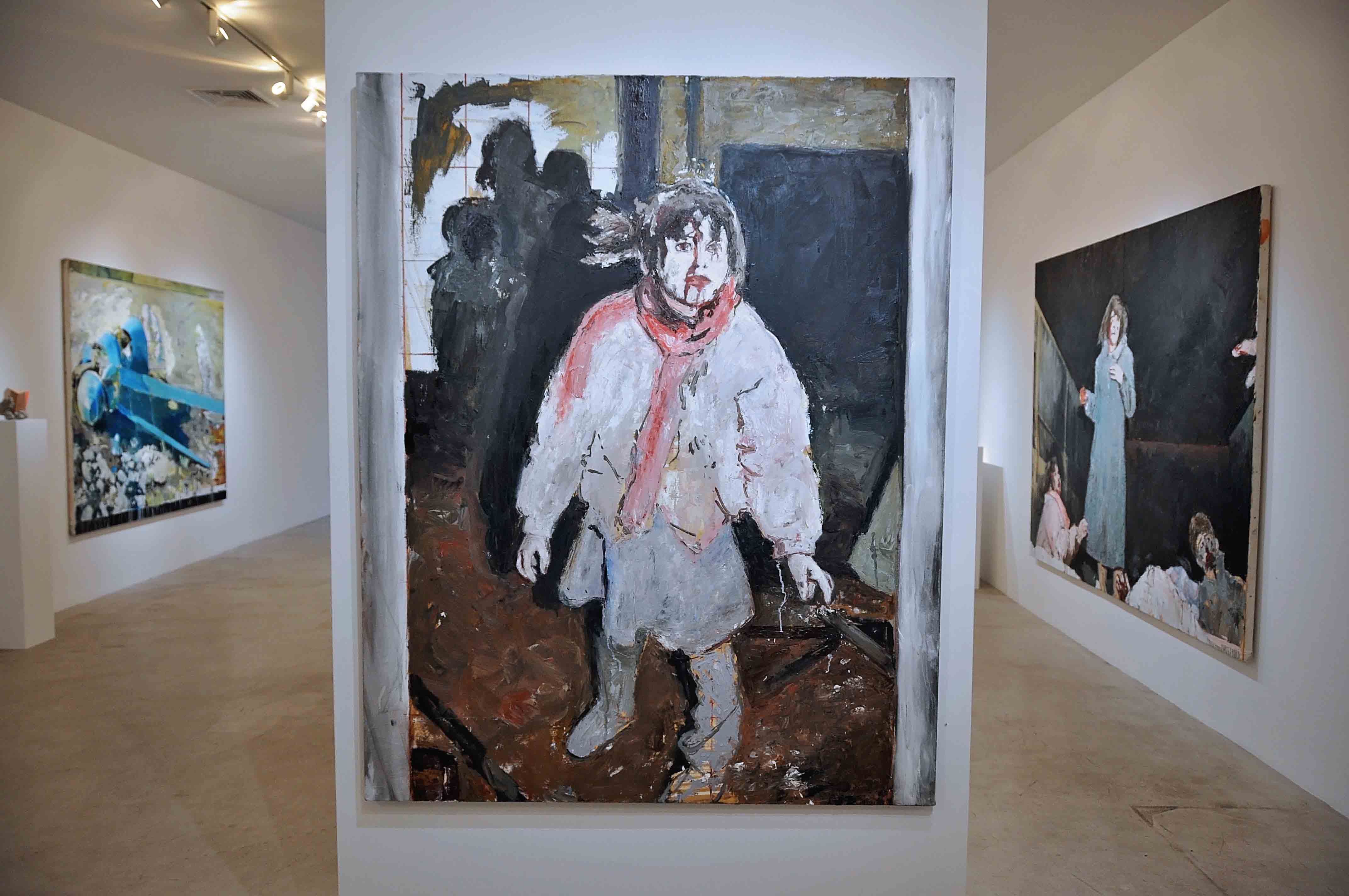
The Aftermath exhibition at the Fred Giampietro gallery is an experiment in violence and the effects of what humans do, bringing together painter John Keefer and sculptor Kurt Steger. For those of us who have not witnessed much violence in our lives, who have only seen destruction and those victimized on screens, the works on display help us to overcome the desensitization we experience after reading countless, horrific stories. We are forced to recognize the individuals in every headline.
The most visceral pieces are John Keefer’s, and, while they pull from an eclectic milieu of violence, they are all supremely haunting. The depictions range from crashed drones and helicopters to destroyed vehicles to the victims of these atrocities, bloody-faced figures surrounded by rubble. Keefer uses thick, frenetic brushstrokes that emphasize the theme of violence, as if the survivors smeared color with their hands as they tried to escape the canvas. Keefer’s painting style feels violent, and, in painting this way, it is as if he has created real violence from his depictions. One interesting detail that takes one out of the illusion is the way Keefer’s paintings all have an underlying linear structure that is explicit; there are a series of perpendicular lines, typically a single color, that run out of and through the painting, making viewers aware of the fact that the artwork is just a rendition of violence. In this acknowledgement of its own representational nature, however, the pieces still serve as a reminder of the violence that exists in the real world.
There is also a sort of bleeding, a running of paint that looks like tears streaking down or across the images. Many of the paintings are dark, full of browns and grays and ashy tones. Even those that depict day time scenes have a repulsive effect, the greens and yellows sickly. Standing in front of one of these paintings is like looking into a nightmare, and many of the images caught in an instant of stillness have an otherworldly quality. A smashed up truck, smoke rising from a skyline, hazmat-suited figures picking up garbage from the wreckage of a house. The most engrossing painting for me was entitled Pink Jacket; a little girl in a dirty pink jacket, blood on her face and dust and dirt in her hair, stands looking out at the viewer. There are shadowy figures behind her, but they are not resolved into forms and faces. The girl is alone and not alone. The distant wall behind her is smeared with a brown the color of shit. Keefer has through his work created something beautiful and horrifying and ugly, all at the same time.
Kurt Steger’s sculptures, alternatively, deal not with the aftermath of violence but with the aftermath of environmental devastation. Strange linear metal monoliths grow out of dark stone like Bond-villain lairs, and boulders weave out of cube-like wooden structures. At times both the man-made and the natural feel cancerous in Steger’s work, and in all instances there is a lack of anything organic. There are no greens, and an intentional deadness to all of it. Occasionally bits of electric orange lend some color and vibrance in a way that is palpably artificial, perhaps even dystopic. Steger’s sculptures are not haunting in the way that Keefer’s paintings are, for they do not cry out at us to witness the horrors that have happened and the victims that still suffer; they rather warn of the future we are heading towards.
Finally, there are two other artists presented in the instillation that are not advertised, and both are worthy of note. Jeremiah Palecek presents a series of oil paintings with faces that are horrifying. Some are blurry, lost to us with the exception of a single, unblinking eye that judges harshly; others are monstrous faces that feel like something out of an HP Lovecraft novel. And Christopher Manning uses a series of collages with various materials and colors to create sad, prison-like pieces that typically feature the face of a single entity trapped in a stark, unforgiving hell-scape. It is difficult to say exactly what they represent the aftermath of, but something has happened, and the emotions that they inspire resonate very well with the Keefer and Steger pieces in the exhibition.
Overall, the pieces instill very different feelings from artist to artist. At times they inspire intense fear, or anger, or disgust. And sometimes, they feel sad and empty and nostalgic for a present that may soon come to be our past. But, as the title of the installation suggests, they all bring us into the Aftermath of something, and we are forced to pick up the pieces of what we see.
Zak Rosen | zachary.rosen@yale.edu







